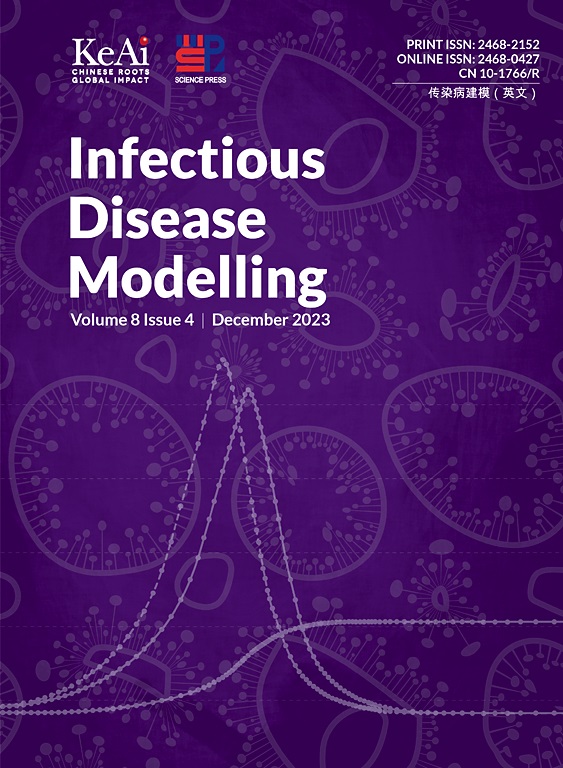Wonder drugs and where to use them: a forecast of ivermectin's impact on malaria in Africa
IF 2.5
3区 医学
Q1 Medicine
引用次数: 0
Abstract
A study in Burkina Faso revealed ivermectin inhibits malaria transmission by killing malaria parasites and mosquitoes. However, it is unknown what effect this drug will have on the malaria transmission intensities of the rest of sub-Saharan Africa (SSA). To address this issue, we created a mathematical model using malaria transmission data from 41 SSA countries to evaluate the antimalarial benefits of a mass drug administration (MDA) of ivermectin. To account for ivermectin's effect on malaria, we incorporate estimates of its ability to inhibit malaria transmission and kill mosquitoes. We consider scenarios where 0, 12.5 %, 25.0 %, and 50.0 % of the population receive ivermectin over five years and estimate malaria incidence averted, disability-adjusted life years saved, and the incremental cost-effectiveness ratio. Our findings show that an MDA of ivermectin to 12.5 %, 25 %, or 50 % of the population annually averts 248.7, 261.4, and 288.7 incidences per thousand people and saves 5.4, 5.7, and 6.3 disability-adjusted life years, respectively. These values indicate that an MDA of ivermectin would be cost-effective in 41, 18, and 6 countries, and very cost-effective in 22, 6, and 3 countries for the 12.5 %, 25 %, and 50 % scenarios. Altogether, our results indicate that ivermectin would prevent a substantial number of malaria incidences and save disability-adjusted life years in the majority of SSA. Therefore, an MDA of ivermectin would greatly aid in ongoing malaria control efforts and should be considered strongly as a complementary intervention to current malaria protocols.
神奇的药物和在哪里使用它们:伊维菌素对非洲疟疾影响的预测
布基纳法索的一项研究表明,伊维菌素通过杀死疟疾寄生虫和蚊子来抑制疟疾传播。然而,尚不清楚这种药物将对撒哈拉以南非洲(SSA)其他地区的疟疾传播强度产生何种影响。为了解决这一问题,我们利用来自41个SSA国家的疟疾传播数据创建了一个数学模型,以评估伊维菌素大规模给药(MDA)的抗疟疾效益。为了解释伊维菌素对疟疾的影响,我们纳入了对其抑制疟疾传播和杀死蚊子能力的估计。我们考虑了0、12.5%、25.0%和50.0%的人口在5年内接受伊维菌素治疗的情况,并估计了避免的疟疾发病率、节省的残疾调整生命年以及增量成本-效果比。我们的研究结果表明,伊维菌素在12.5%、25%或50%的人群中每年可避免每千人248.7、261.4和288.7的发病率,并分别节省5.4、5.7和6.3个残疾调整生命年。这些值表明,在12.5%、25%和50%的情况下,伊维菌素的大规模剂量在41、18和6个国家具有成本效益,在22、6和3个国家具有非常成本效益。总之,我们的结果表明,伊维菌素可以预防大量的疟疾发病率,并节省大多数SSA的残疾调整生命年。因此,伊维菌素的大规模剂量将极大地有助于正在进行的疟疾控制工作,应强烈考虑将其作为当前疟疾方案的补充干预措施。
本文章由计算机程序翻译,如有差异,请以英文原文为准。
求助全文
约1分钟内获得全文
求助全文
来源期刊

Infectious Disease Modelling
Mathematics-Applied Mathematics
CiteScore
17.00
自引率
3.40%
发文量
73
审稿时长
17 weeks
期刊介绍:
Infectious Disease Modelling is an open access journal that undergoes peer-review. Its main objective is to facilitate research that combines mathematical modelling, retrieval and analysis of infection disease data, and public health decision support. The journal actively encourages original research that improves this interface, as well as review articles that highlight innovative methodologies relevant to data collection, informatics, and policy making in the field of public health.
 求助内容:
求助内容: 应助结果提醒方式:
应助结果提醒方式:


